Scotland
Disconnect on the impeccably green island of Eigg
In both ethics and aesthetics, Eigg is remarkable. In sustainability terms, it’s unique: the first island, indeed region of the UK, to be self-sufficient in renewable energy. Eigg disconnected from the mainland back in 2008. By balancing solar, water and wind power, the community-owned Eigg Electric provides enough power all year round to supply the 100 or so permanent residents and the 10,000 visitors who come every summer.
The wind turbines were positioned on the slopes of Eigg’s landmark mountain, An Sgurr, not only to maximise wind exposure and minimise turbulence, but to fit into the spectacular setting. Even the solar panels on a flowery south-facing hillside look good.
Ownership of Eigg was transferred to a Heritage Trust in partnership with the Scottish Wildlife Trust in 1997, with contributions from thousands of members of the public. With empathy and commitment, the community has organised its island so that we can enjoy it too. No visiting cars or campervans are allowed, but it’s small enough for a day trip (from Arisaig on the mainland, a one-hour ferry ride). The redeveloped An Laimhrig community hub with cafe – designed by Hebridean architect Will Tunnell, will open in time for the 25th anniversary of the community takeover this summer – and the annual celebratory party takes place on 12 June.
Nowhere on Eigg is more than a two-mile hike and Charlie’s taxi is usually by the pier. Next door to the cafe, the shop has a surprisingly eclectic range of goodies and essentials, and bikes to hire.
Despite Eigg’s size (five miles by three), it has several places to stay, including a guesthouse and a great hostel, and campers are welcomed. A new (sustainable) shower block and cool camping pods (from £45 a night for four) by the pier opened last year, and the Isle of Eigg Brewery, a cooperative operating along impeccably green lines, will open in 2022.
The climb up An Sgurr is rewarded with one of the best views in the Highlands. Walks around Laig Bay, with views across to Muck and mighty Rum, could be taken every day, and the ethereal interplay of sand, sea and sky would still mesmerise. Last summer I visited a lot of Scottish islands for a new photo guide to be published in the spring, but none has its act as consummately planned and holistically together as Eigg. isleofeigg.org
Pete Irvine, author of
Scotland the Best: the Islands, published on 3 March
Greece
Thessaloniki’s cosmopolitan and tolerant energy

I spent the best part of last summer lying on idyllic and isolated Greek island beaches thinking about a very different place and time: the rich and complicated urban history of Thessaloniki, Greece’s second city.
British historian Mark Mazower’s thought-provoking book, Salonica: City of Ghosts, transported me from the Byzantine to the Ottoman era, the city’s integration into the new Greek state in the early 20th century and the fallout from the second world war. As much of the region continues to tread a dangerous path of deepening nationalist hostility, Thessaloniki’s history of diversity and coexistence is a sobering reminder that things do not have to be this way: Christians, Muslims and Jews lived side by side in peace for hundreds of years.
Salonica, as it is is also called, was the only city in Europe with a majority Jewish population – the “Jerusalem of the Balkans”, though few survived the Nazi occupation and Holocaust. However, Thessaloniki’s cosmopolitan and tolerant energy survives today, with a vibrant culinary and cultural scene. It was recently named Greece’s first Unesco city of gastronomy
I will be going for the Thessaloniki Documentary Festival in March on one of the high-speed trains from Athens which launch this month. From the UK, get a train to Bari or Ancona in Italy, then ferry to Patras and continue on Greek railways (OSE) via Athens to Thessaloniki (with a short substitute bus on the first, Patras-Kiato, section).
Alex King
France
Cycle Grenoble’s riverside parks
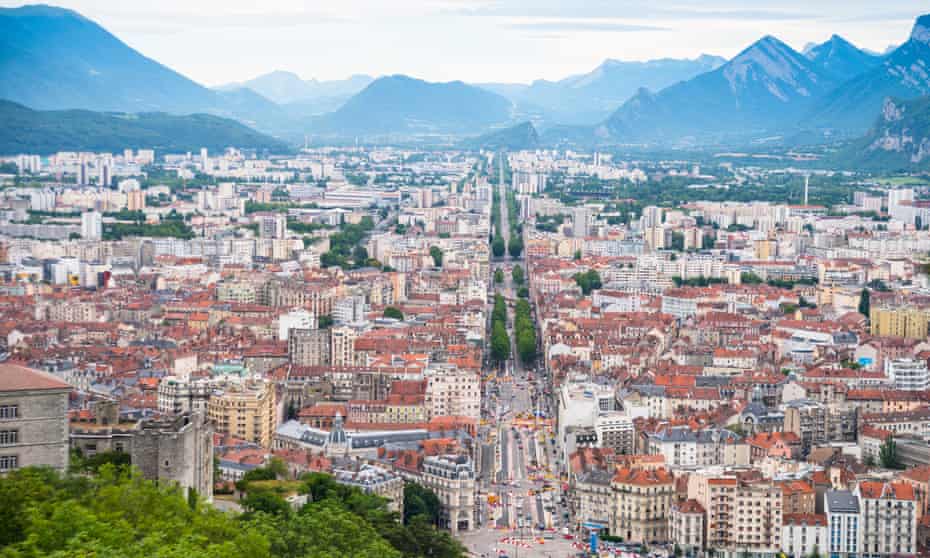
The city of Grenoble, in south-east France, has been named Green Capital of Europe for 2022, and while it’s well known to skiers, it makes a great destination year-round. Head there in spring, when the train via Paris whizzes through Burgundy’s blooming vineyards and on into the mountains. Grenoble sits at the point where three valleys meet, and is surrounded by the Belledonne, Vercors and Chartreuse mountains. Getting around is easy: the city’s cycle-share scheme, Métrovélo, has 7,000 bikes, and there are 200 miles of cycling routes in and around the city. Visitors can ride between parks and out along paths that follow the rivers Drac and Isère.
For the best views, take the cable car from the city centre up 500 metres to the 19th-century Fort Bastille. Hikers are spoiled for choice with trails that zigzag around the mountains. The food scene has long embraced sustainability, and several restaurants use only local produce. Book a table at Jeanette, where chefs Manon Bocquentin and Thaïs Giannetti use suppliers from within 20 miles of the restaurant and forage for mountain herbs for their delicate and inventive dishes.
To rest weary limbs after hiking and biking, check into the bright and modern Okko Grenoble Jardin Hoche Hotel (doubles from €98 room-only) in the ecodistrict of Zac de Bonne. The first of its kind in Europe, it’s a former military brownfield site that was transformed into a sustainable community.
Carolyn Boyd
Italy
Molise is waiting to be discovered
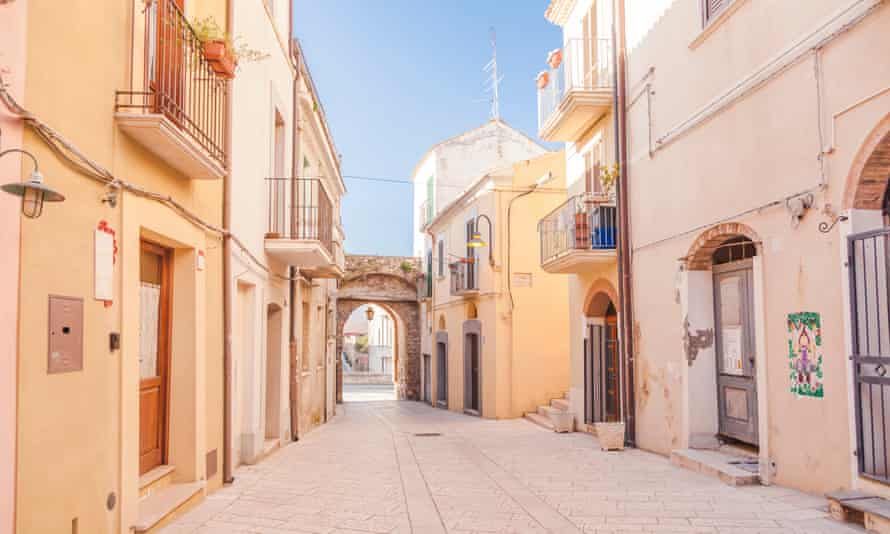
Molise, a sparsely populated region of southern Italy, is so off the radar that many Italians joke that “Molise non esiste” (Molise doesn’t exist). But after visiting for the first time in 2019, I realised the mockery is unfair. Molise contains the very best of Italy, from the scenery to the food. But best of all, it feels like uncharted territory.
Being someone who enjoys travelling by train, I am now looking forward to returning in 2022 on board the Molise Express, a vintage train that will show visitors the best of the region’s mountains, coastlines and ancient villages.
“Molise is among the least-known regions in Italy,” said Fabrizio Minichetti, president of Le Rotaie-Molise, the association that helped launch the initiative. “But we have mountains, the sea, wonderful scenery and many beauty spots that deserve to be discovered.”
The service will be rolled out this year and take passengers through the Biferno valley, from the coastal town of Termoli to the regional capital of Campobasso, stopping off at the villages of Casacalenda and Larino before returning to Termoli. The day trip, costing €24, will give passengers ample time to explore the historic towns, including a trip to the Kalenarte open-air contemporary art museum in Casacalenda. The train carriages, with wooden interiors, date back to the 1920s.
The initiative is one of several vintage train routes planned in Italy as the country seeks to promote train tourism. In 2023, the Dolce Vita train will be launched: it’s a luxurious sleeper that will show passengers the best of the Italian landscape, from north to south, with stops in more than 100 cities. The service plans to introduce visitors to lesser-known spots, such as the Sila mountains in Calabria.
Angela Giuffrida
Czech Republic
A monastery and brewery under one roof in Prague
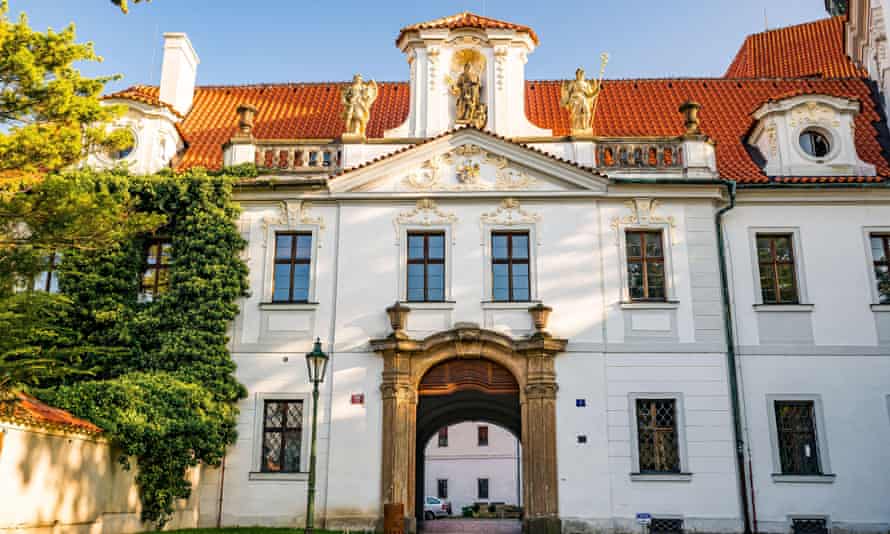
It’s one of the greenest cities in Europe when it comes to parks and open spaces, but Prague has been sluggish on the uptake of sustainability – aside from the newly installed pink city bikes and a sprinkling of zero-waste grocery stores. That’s what makes the Břevnov Monastery such a great spot. Founded in 993, this still-active Benedictine friary is a fascinating U-shaped complex, enveloped in a tangle of trees, lakes and winding little paths.
The embedded Adalbert Hotel (doubles from €75 B&B) is an award-winning guesthouse, and its recent eco-revamp has seen it embrace a number of sustainable, planet-saving practices, such as waste reduction, energy saving and using environmentally friendly products. As well as the hotel and monastery (tours available), the complex also rather brilliantly houses a brewery – the oldest in the Czech Republic, no less. You can sample their lagers, IPAs and wheat beers from the bottle shop-cum-beer hovel, or even better, head to their rustic, fire-heated tavern opposite and combine it with a bowl of delicious mushroom soup.
Mark Pickering
Greece
Ancient theatres get back in the act

The Epirus coast is one of the prettiest in Greece, yet one of the least visited, despite having the most accessible stretch of beaches for those who prefer to avoid flying, as it starts south of Igoumenitsa, terminus of the ferries from Italy.
I went on holiday to Parga when I was 12 and have vowed to return ever since. Not a resort on everyone’s radar, Parga is built over a double-curve bay. Memories of its transparent waters, fringed as they were by jungle-thick vegetation, merge in my mind with those of Brazil’s, a later love of mine.
Syvota, further north, presents an incongruous sight to Greece aficionados: a mountain village lording it over a magnificent coast, whose low treeline resembles a Norwegian fjord. I have long yearned to explore its archipelago of tiny offshore islands and their pristine sandy beaches.
It’s ancient history, though, that grabs me this year, associated with five ancient theatres restored and promoted as part of a new archaeological route. I’m particularly curious about Gitana, with its carved seat names – unusually one reserved for a woman, called Filista – and romantic Dodona, built by Pyrrhus, him of the “pyrrhic” victory which inspired Lord Byron to write a poem.
I won’t miss the theatre at ancient Nikopolis, founded by Octavian after his victory against Anthony and Cleopatra. Its successor, Preveza, is a delightful, laid-back town worth exploring that serves both as a cultural springboard and as a holiday choice in its own right, with a good share of pleasingly uncrowded beaches.
John Malathronas
Slovenia
The beaches and cosmopolitan backstreets of Piran
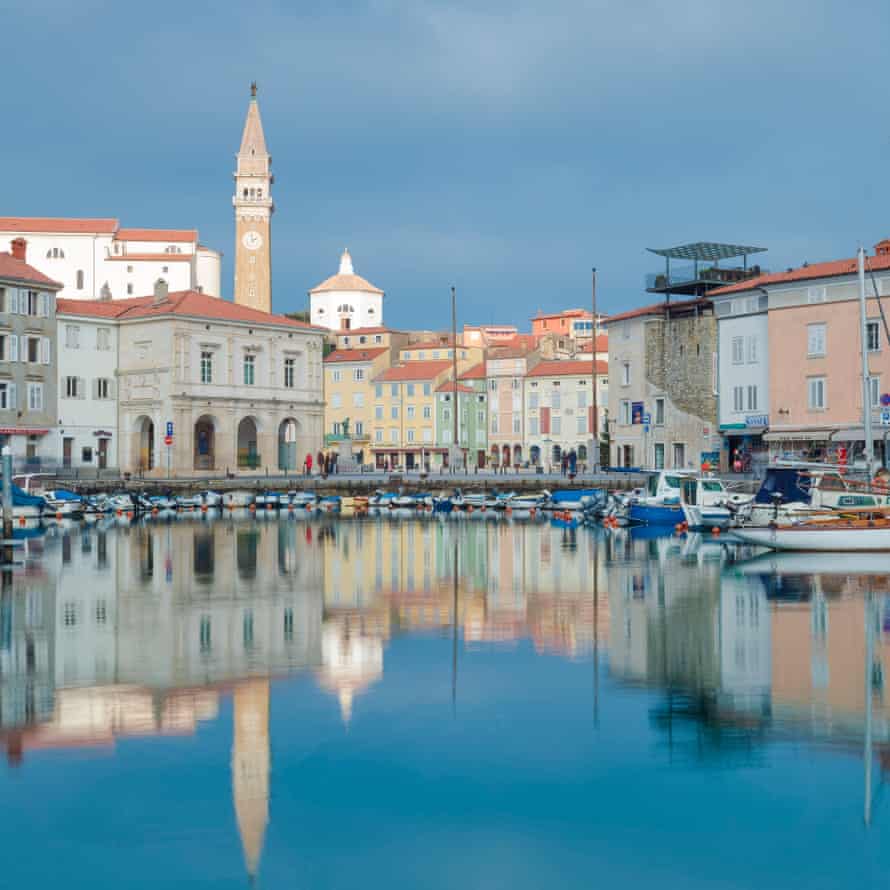
I had spotted it on the map a few years ago: Slovenia has a coastline. Who knew? The region around the Italian port of Trieste is full of such geographic curiosities; the borders having ebbed and flowed with the tides of empire ever since the Romans lost the plot at the close of the sixth century. At the end of the second world war, Tito’s Yugoslavia occupied the wider area, but later agreements pushed back, snipping all but 29 miles of coast from what was, until 1991, the Socialist Republic of Slovenia, sandwiched between Croatia and Italy.
Last year I managed to snatch a brief look at one of the towns, Piran, a gorgeous labyrinth of old Venetian architecture around a lovely harbour. It’s the sort of town where you get lost, discover some fantastic back streets, then emerge totally disoriented close to where you started.
Despite swapping countries and empires with baffling frequency, it retains a laid-back cosmopolitan ambience. In high summer, I am told, it gets over-populated with visitors, so I’ll avoid those months: I just want to wander in those shady slot canyons of ancient houses, emerging occasionally by the sea to eat a seafood platter or some of the excellent prśut (cured ham) with a glass of a Slovenian wine.
The hills behind the town are known for their teran reds and malvazija whites, but don’t miss the other local speciality, dry white rebula. The nearby town of Izola looks interesting and Portorož is said to have a good beach. For cycling tours check out Visit Good Place.
Kevin Rushby
Germany
Cycle all the way to the Black Sea
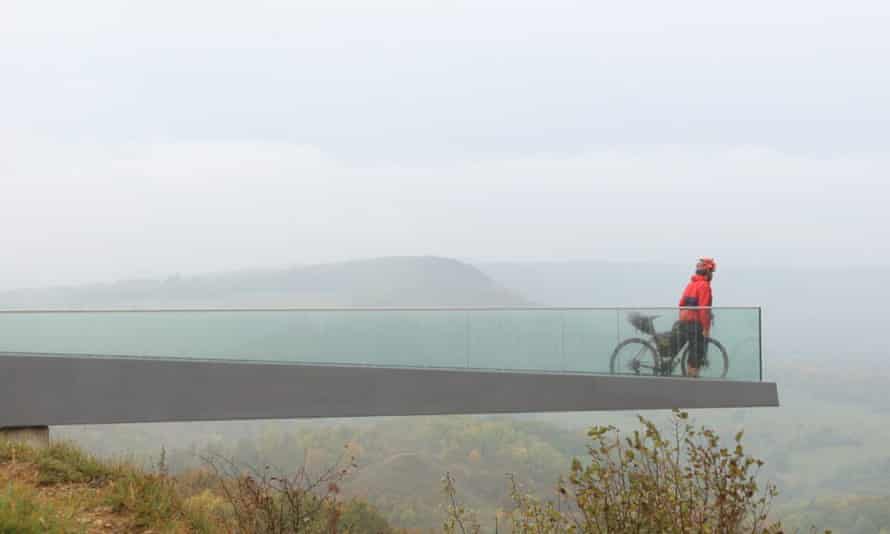
An unusual, but highly sustainable way to explore some of Germany’s lesser-touted regions is to hop on your bike – or rent one locally – and follow part of the Iron Curtain Trail. Officially called the EuroVelo 13, the trail stretches over 6,000 miles along the former cold war divide between east and west, from the Black Sea up to the Barents Sea.
The Germany section combines two separate routes: the Baltic Sea Cycle Route, where you can experience stunning coastal landscapes and beach-peppered holiday islands like Usedom and Rügen; and the German-German Border Trail, whose former depopulated zones have been transformed into a major green belt.
As you make your way down past the border areas with Poland and the Czech Republic, you’ll find plenty of nature areas, including the Lauenburg Lakes and Harz mountains, plus dense forests and sights like Wartburg Castle. If it’s not far enough, continue all the way down to the Black Sea. If it’s too far, try the Iron Curtain Gravel Trail.
Paul Sullivan
Spain
Temptation overload on Galicia’s dramatic west coast

Beyond Santiago de Compostela, Spain’s beautifully green north-west corner remains one of the country’s less-visited pockets. On Galicia’s west coast, where the mist-shrouded Costa da Morte gives way to the deep inlets of the Rías Baixas, fabulous fresh seafood, silky Atlantic surf beaches, clifftop hiking trails, up-and-coming albariño wineries and pristine offshore islands are just some of the temptations.
Opened in 2020, the sustainability-driven Parador Costa da Morte (doubles from €150), near Muxía, ups the appeal, with design inspired by Galician culture and landscapes; it’s part of a years-in-the-making regeneration project after a 2002 oil spill. Or stay at an inspiring rural hotel such as Casa Fontequeiroso (doubles from €70 B&B)– a stone-built 100-year-old home above off-the-beaten-track Nemiña beach, where Mari Carmen Leis Calo serves home-cooked meals. A quick ferry ride from Vigo (Easter week and May to September) lie the stunning Cíes Islands, whose plunging cliffs and pearly beaches are the stars of the Illas Atlánticas (Atlantic Islands) national park.
Take the ferry to Santander or Bilbao with Brittany Ferries, from £101pp) then road-trip or train west to Galicia
Isabella Noble
Wales
A pilgrimage to Bardsey Island

Bardsey Island, or Ynys Enlli, a lump of Precambrian rock in the Irish Sea off the Llŷn peninsula in north-west Wales, has been a place of tranquil worship since the sixth century, and a place of dedicated pilgrimage since the middle ages. I feel as if I have been trying to get there for almost as long. Over the years, I have been foiled by storms twice (the two-mile ferry crossing from the mainland through strong tidal races is frequently disrupted), misadventure and even the birth of one of my children.
Going on a “pilgrimage” has seen renewed interest recently, with people seeking meaning and adding purpose to a trip – and in the spirit of the steadfast pilgrimages our forebears made to Bardsey, known as the “Island of 20,000 saints”, I am going to cycle there in 2022 – 150 miles from my home in the Black Mountains, following winding green river valleys and crossing the hauntingly empty moors of mid-Wales. Training for this will help fulfil another key goal for this year: to finally slough off the lockdown laziness and get seriously fit once again.
Rob Penn
Portugal
Algae, almonds and an eco retreat near Olhão
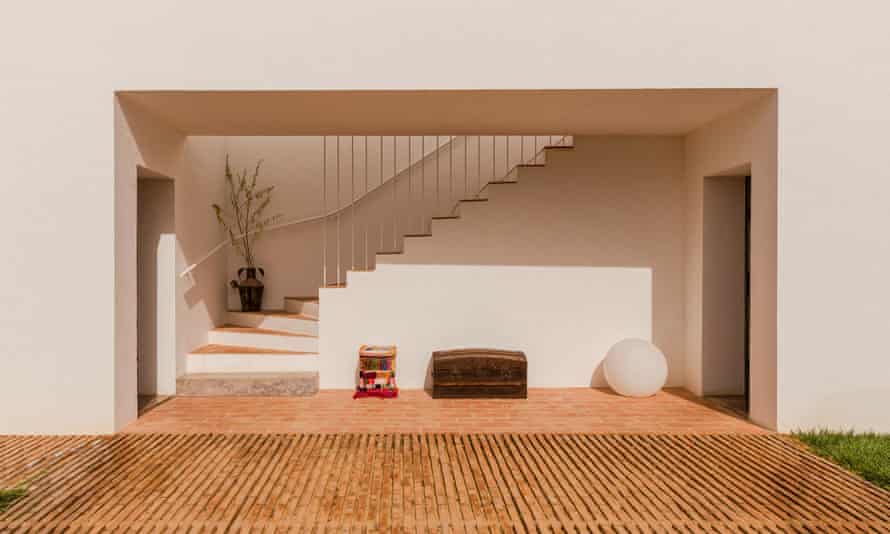
An “old sea dog” known to his family as the Champ, Joaquim Modesto de Brito inspired his grandchildren to build Casa Modesta (doubles from €120 B&B) converted into an ecoretreat from the old family home on the edge of the eastern Algarve’s Ria Formosa, a natural park. The renovation by grandson Carlos Fernandes used locally sourced and sustainable materials, and an organic garden was sown so that the harvest could be enjoyed by guests.
A partner of FEE (Foundation for Environmental Education), it has nine rooms, decorated by Fernandes’s sister, Vânia, making features of the original vaulted ceilings and terracotta floors. Local olives, almonds and algae are used in the spa treatments, and bikes are provided for guests to explore the cycle paths along the estuary, as well as the nearby fishing town of Olhão. The family says: “Our door is always open to welcome those who arrive with the same joy with which we would run to our grandparents’ arms when we were little.”
Audrey Gillan
Belgium
Cutting-edge culture in Antwerp
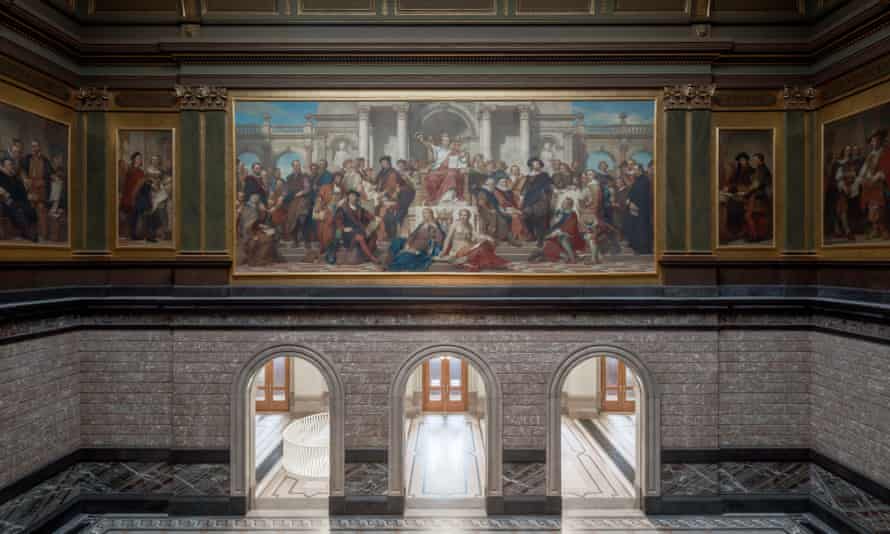
Whether art to you means a directional Dries Van Noten outfit or a dark and dramatic Rubens painting, Antwerp will appeal. The city combines an artistic pedigree dating back to the Flemish masters in the city’s 16th-century golden age with a thriving fashion scene, forward-thinking back-street galleries and edgy warehouse clubs.
This year is an especially important year for the city, with the reopening of the Fine Arts Museum (KMSKA) in September after a 10-year renovation. The revamp of its beautiful historic building includes a new wing over four painstakingly restored courtyards. Two halls will be dedicated to Antwerp’s most famous painters: Rubens and Van Dyck.
KMSKA is conveniently located in the trendy Zuid neighbourhood, handy for Antwerp’s more recent cultural contributions. Here you’ll find MoMu, a world-famous fashion museum, alongside Ann Demeulemeester’s airy flagship store and Dries van Noten’s Het Modepaleis, which mixes cutting-edge design with vintage furniture. For up and coming designers, try Nationalestraat and Kloosterstraat.
For an insight into the future of Antwerpian culture, visit Het Eilandje in the northern docklands. There are forward-thinking restaurants in the Felix Pakhuis warehouse and contemporary galleries along the Artland trail, as well as MAS, a maritime museum with spectacular city views. Borgerhout, near the central station, is popular among a younger, artier crowd – try Pekfabriek, a club in a former pitch factory that hosts Belgium’s best underground DJs.
Rachel Hall
Portugal
Sustainable luxury in one of Europe’s top surfing towns
The town of Ericeira, north of Lisbon, may be famous as a world-class surfing spot, but until now it had no five-star hotel. There is an abundance of hostels and guesthouses, but Immerso (doubles from €175 B&B), built into a green valley just outside the town, will be the first high-level destination hotel aiming to combine a concern for the environment – on local and planetary levels – and luxury.
The owners say sustainability is at the heart of the project and that the design and colour palette will reflect the landscape and the sea. Due to open in early summer, Immerso will have 37 rooms and a restaurant – Emme – under the consulting guidance of Michelin-starred chef Alexandre Silva of Lisbon’s Loco restaurant. There will be a vegetable garden, in-house beer production (one Pilsner, one ale) and plans are afoot to host surfboard workshops.
Audrey Gillan
England
Clock up your steps on the Lake District’s Ullswater Way
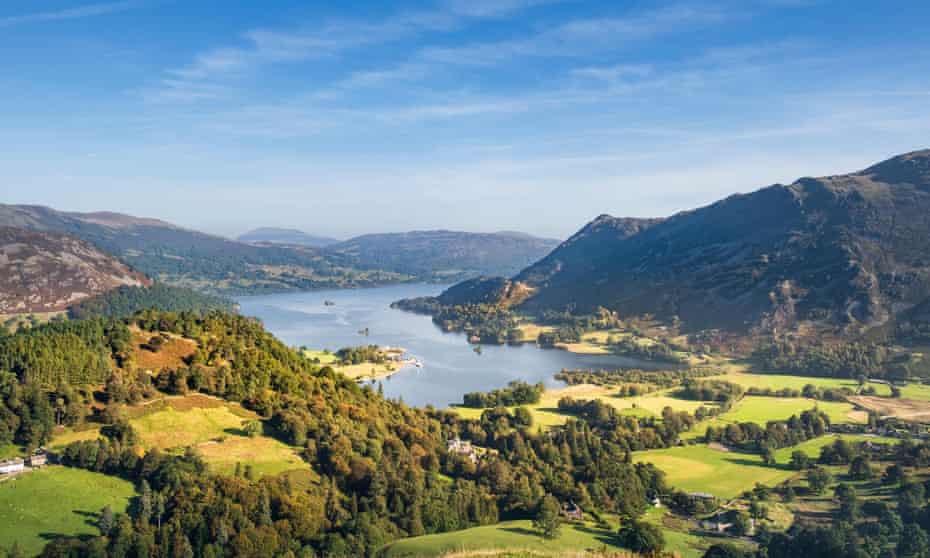
In late 2020 a new bridge opened at the northern end of Ullswater, five years after Storm Desmond destroyed the old one, and first across it was a flock of sheep. Leave the car behind and go off-season for spring flowers, autumn colours or crisp winter hikes. Penrith station is half an hour away by bus: the 508 rolls from there, past the green fells that rise out of Ullswater’s misty, island-dotted water. Ullswater Steamers from Pooley Bridge run to remote Howtown Pier on the eastern shore of the lake or to the 150-metre-high Aira Force waterfall on the west.
The Ullswater Way is a weekend-ready, 20-mile circuit of the lake. It climbs to the iron age circle of Maiden Castle, with views that stretch east to the Pennines, and heads down again through rugged, ferny woods. Fellwalking author Alfred Wainwright called Ullswater “loveliest of lakes, curving gracefully into the far distance”, and opined that the seven mossy waterside miles from Howtown to Glenridding formed the “most beautiful and rewarding walk in Lakeland”.
The Ullswater Way opened in 2016; its daffodil waymarkings flag up that this is the lake where Wordsworth wandered past his verse-inspiring flowers. A new five-mile loop from Pooley Bridge leads to the Dalemain Estate, for tea by a log fire in the medieval hall; another detour, added in 2019, takes in Lowther Castle.
Stay in a hobbit hole or a cabin with a stargazing roof at green-award-winning glamping complex the Quiet Site (from £85 a night for two adults and four children). It’s right on the Ullswater Way, and there’s a zero-waste shop and off-grid cafe. New pet- and family-friendly, carbon-positive Gingerbread Houses with wooden walls, heat pumps and beech hedges, opened in 2021.
Phoebe Taplin
Croatia
700km of waterways for the taking in a Unesco biosphere
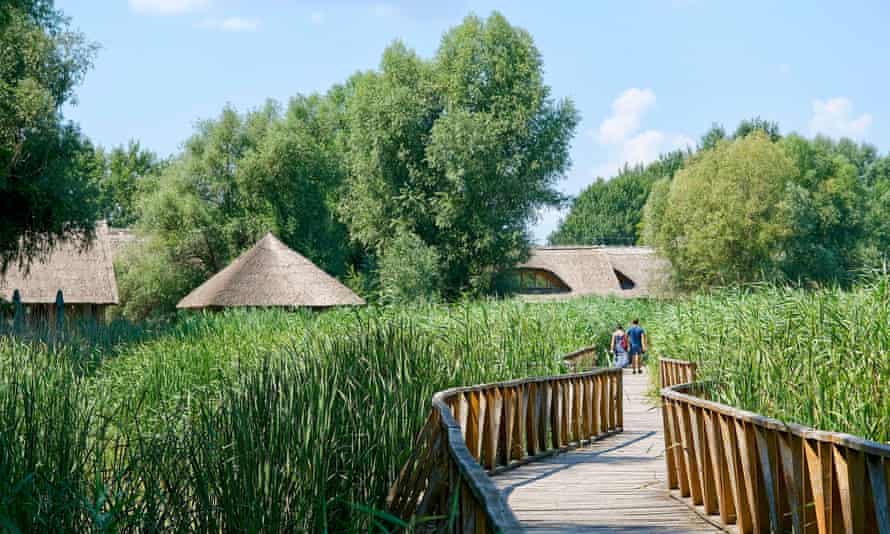
They’re calling it the “Amazon of Europe” – which might be overselling it a tad – a vast, newly declared Unesco biosphere reserve that follows the routes of the Mura, Drava and Danube rivers as they meander through Austria, Slovenia, Hungary, Croatia and Serbia.
It’s the biggest protected river area in Europe, covering over 400 miles of waterways, and I’ve got my eye on a couple of areas in Croatia and along its border with Serbia. The first is Kopački Rit nature park, a huge area of wetlands between the Drava and Danube rivers by the Serbian border. You can take a small boat tour along its waterways to watch the birdlife, and hire a bike to cycle along the park’s beautifully flat trails. You could also hop across the border into Serbia and hike through the forested trails of Gornje Podunavlje nature reserve which runs along the Danube.
The second area isn’t quite so well known to British visitors. Where the Mura meets the Drava river by the Hungarian border near the village of Legrad, there’s the specially protected nature reserve of Veliki Pažut, where a solar-powered boat runs along the river to spot rare birds, including the little tern. I’d then hire a bike and cycle along the Drava and head inland along the old Iron Curtain EV13 bike trail to the pretty baroque town of Koprivnica. I’d carry on to the village of Hlebine, birthplace of Croatian naive art, which I’ve always found fascinating. And then finish with a swim in Šoderica, a lake formed by the Drava, and a cold beer in one of the lakeside cafes.
Mary Novakovich
Spain
Red wine and Roman ruins in Tarragona

Once the capital of Roman Spain, Tarragona tends to get overlooked, but there’s something for everyone in this elegant Mediterranean city, from ancient monuments to the bars and restaurants of the old town. The city was founded by the Scipio brothers, both Roman generals, in 217BC and their legacy includes a largely intact Roman amphitheatre and circus as well as the spectacular Devil’s Bridge aqueduct two miles north of the city. The city was declared a Unesco world heritage site in 2000.
The town is dominated by a 13th-century cathedral, built on the site of a mosque and before that a Roman temple. Unlike Barcelona’s gothic quarter, Tarragona old town hasn’t been lost to tourism. There are excellent restaurants serving local specialities such as romesco de peix, a Catalan fish stew. It’s also a treat to eat in the restaurants by the port, where the fish is cooked more or less straight off the boat.
People associate the region with cava, Catalonia’s sparkling wine, but some of Spain’s best reds also come from Tarragona, notably priorat and montsant, and the local Yzaguirre vermouth makes a great aperitif.
Tarragona also has a fine city beach, Platja del Miracle. A nine-mile coastal walk runs along beaches and through umbrella pines to Altafulla, a good lunch stop before catching a train back to the city. Those with strong stomachs and no fear of heights might prefer the Port Aventura theme park and its 65mph rollercoaster.
Trains to Tarragona leave from Barcelona Passeig de Gràcia every half-hour, taking time 1¼ hours
Stephen Burgen
England
Celebrate the 1,900th birthday of Hadrian’s Wall
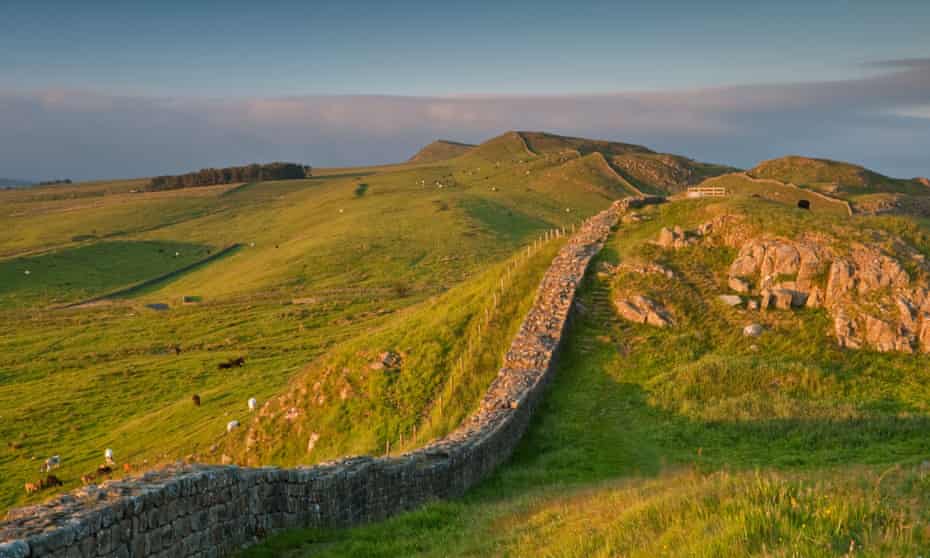
This year marks exactly 19 centuries since Emperor Hadrian oversaw the start of work on the 73-mile wall to guard the Roman empire’s remote north-western border – and a year-long festival is planned to celebrate. From the banks of the Tyne in Newcastle to the Solway Firth, west of Carlisle, this Unesco-listed frontier has a national trail tracking it from coast to coast.
You can walk beside sections of wall or follow its former course, snaking over grassy hills, past turrets, milecastles and whole Roman towns. There are huge views across the landscapes of Northumberland and Cumbria from ruins like Housesteads fort with its barracks, hospital and communal loos. Fragments of ancient life here – a hobnailed leather shoe or a bowl with a carved soldier’s name – survive in the museum.
Hadrian’s Wall 1900 Festival kicks off in late January and will include new site-specific artworks, summer evening concerts, re-enactments, walks, Roman-themed light trails and a travelling Saturnalia. It’s a great time to explore – I intend to walk it in stages over the course of the year.
Phoebe Taplin
Sweden
Rock up at a skyscraping wooden hotel on the east coast
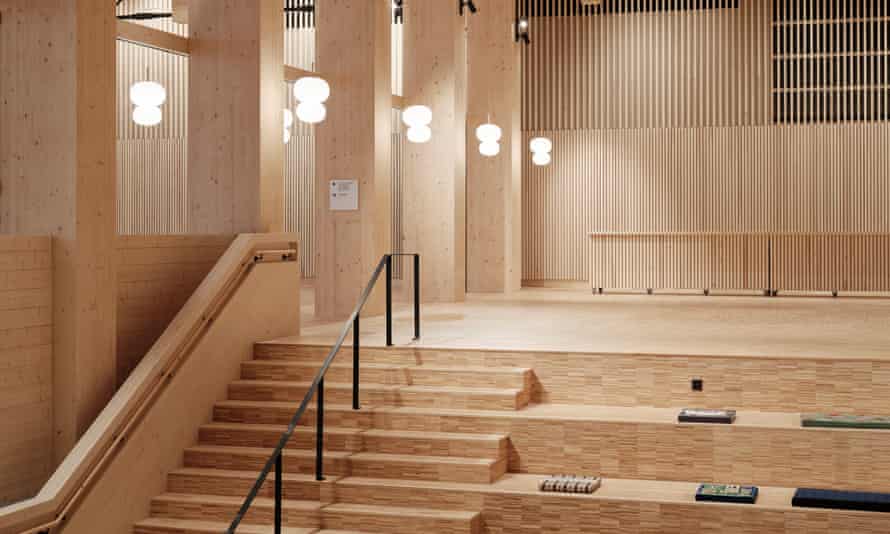
International visitors usually head for Sweden’s big southern cities or the mountainous north, where local companies offer a flurry of wintry outdoor experiences, from ice-carving to snowy horseback safaris. But it’s sometimes the less obvious destinations that offer a true taste of Sweden. Take Skellefteå, 430 miles north of Stockholm along the sand-fringed east coast. By international standards, this former gold-mining outpost is tiny, with a population smaller than Scunthorpe’s.
Its eco-credentials are world class, though: Skellefteå is leading the way in sustainable timber construction, and The Wood Hotel (doubles from £150 B&B), with Scandi-minimal and a rooftop terrace, has just opened inside a new cultural centre. This 20-storey architectural triumph is one of the world’s tallest timber buildings, with epic views of the surrounding forests.
Skellefteå is not a tourist hub, but it should be. During winter you might see the northern lights, and there are tons of eco-friendly activities to try in the forests nearby, from hiking to elk-spotting. Photographers can snap golden eagles in the wild right through until March, and in summer pristine beaches are perfect for evening swims.
Steve Vickers, editor of Routes North Scandinavia travel guide
France
Brittany’s enchanting coastline and seaweed spas
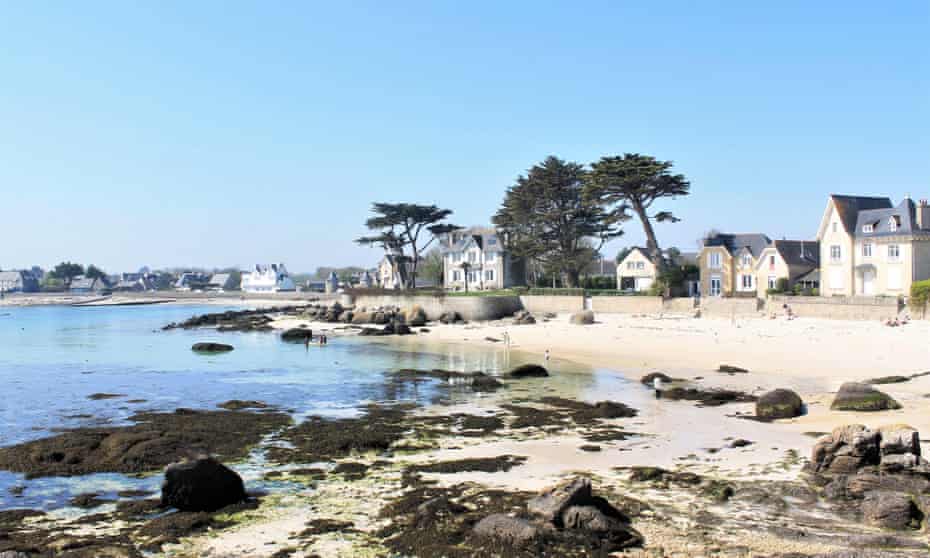
On a fine sand beach in the small seaside town of Brignogan-Plages on Finistère’s dramatic north coast, Hôtel de la Mer (doubles from €90 room-only) reinvented itself as an ecologically responsible hotel in 2016.
The spacious 18-room residence is warmed and powered by renewable energy; it harvests rainwater and recycles as much as possible; and its owners are passionate about the local crop – seaweed. With foraging workshops, seaweed-based spa treatments and seaweed-themed menus in the restaurant, there is much to enjoy, but it is the hotel’s position on this enchanting and little-visited coastline that steals the show.
After a day exploring Finistère’s pretty islands and broad sweeping Atlantic beaches, head back to the hotel for a drink, then enjoy a pre-dinner paddle among the rocks in the shallows as the tide creeps in, enjoying the stillness of the evening. And as this region is just an overnight ferry ride away – on Brittany Ferries’ Plymouth-to-Roscoff route – the journey there is stress-free.
Carolyn Boyd
Sign up to our Inside Saturday newsletter for an exclusive behind the scenes look at the making of the magazine’s biggest features, as well as a curated list of our weekly highlights
England
A living artwork in Cornwall’s Eden Project
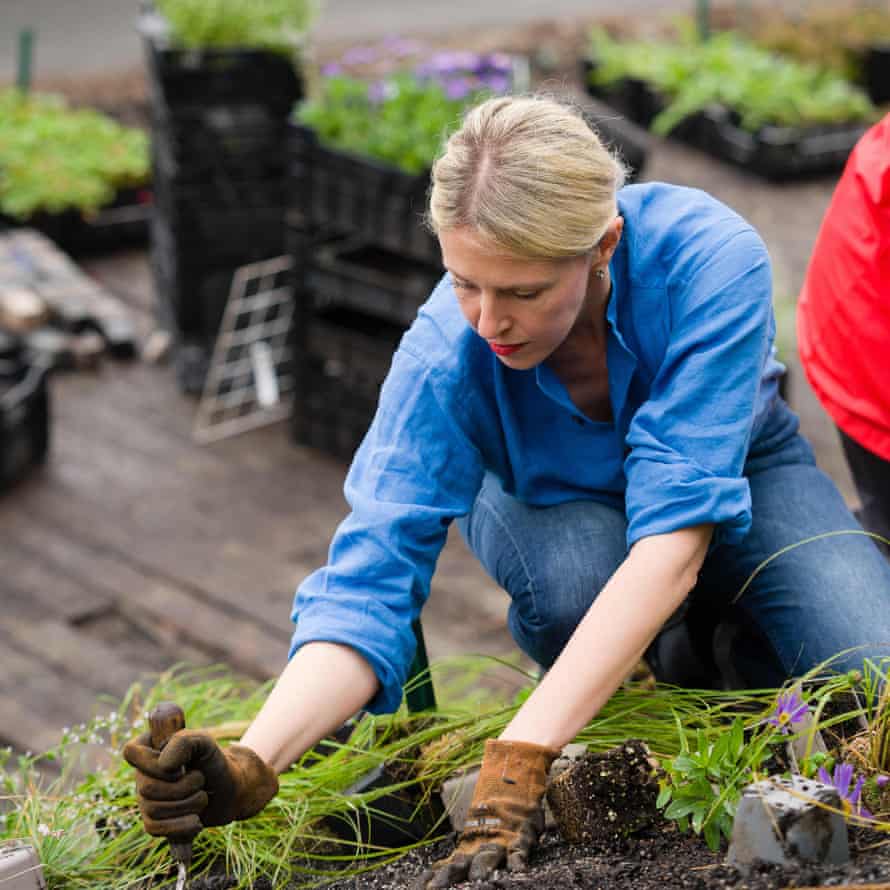
The huge greenhouse domes that form the Eden Project have gardens inside and out: valleys of spring bulbs, hothouse-pungent rainforests, an oasis of rose and jasmine, and a treetop walkway overlooking palms and papayas.
Eden has just announced a new 55-metre-long living artwork. An autumn-planted, bee-friendly Pollinator Pathmaker by artist Alexandra Ginsberg will be a permanent installation, due to be in flower for human and insect visitors by June.
You can arrive by train at St Austell station and catch the new Daytripper bus or cycle four miles through wooded valleys. St Austell is also an easy bus or bike ride from sandy beaches, village pubs and the subtropical Lost Gardens of Heligan. It’s a five-minute stroll from the station to St Austell’s Victorian brewery, where seagulls call, the air is heavy with hops and tasting tours have just restarted.
Phoebe Taplin
Ireland
Unwind in a hot seaweed bath in County Waterford
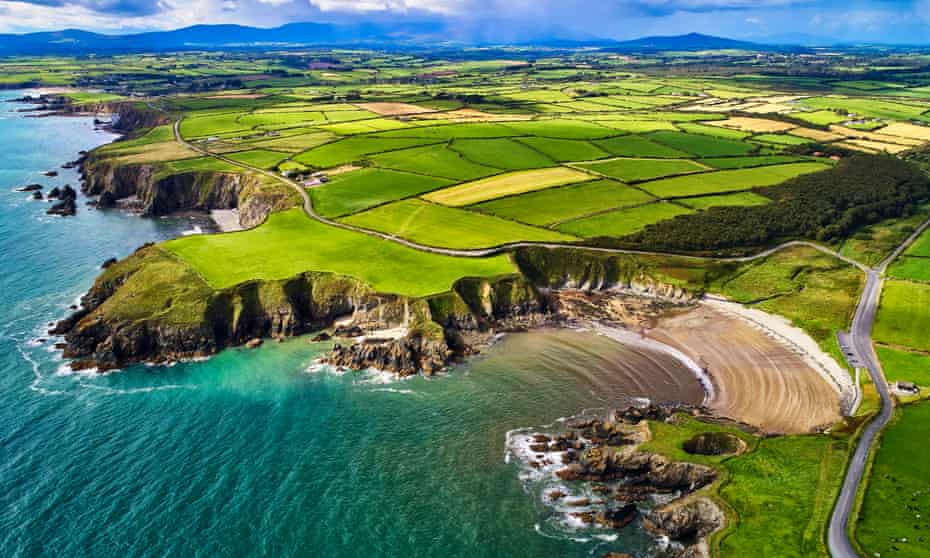
Waterford is curiously overlooked and under-appreciated as a destination. The star destinations of Dublin, Kerry and Galway grab the headlines and by far the greater number of visitors, but the small southern county has an abundance of attractions – and some serious sustainable travel credentials.
From historic, walkable and rapidly regenerating Waterford City – recently voted “best place to live in Ireland” in the Irish Times – venture out on the Waterford Greenway, the country’s longest dedicated cycling and walking trail, which runs for 28 miles to Dungarvan using a former railway track that features 11 bridges, three viaducts and a 400-metre tunnel.
Alternatively, hug the scenic and secluded Copper Coast, a 15-mile stretch of rugged shoreline between Tramore and Dungarvan that is one of only three Irish Unesco-designated Geoparks. Stop off for seaweed foraging, tastings and beach picnics with Marie Power, or the Sea Gardener (three-hour trips €35). A little further on at Helvick pier is Sólás Na Mara, a wellness centre offering one of Ireland’s oldest natural therapies – hot seaweed baths.
Lismore, in the west, is possibly the prettiest town in Ireland and celebrated for its charming cathedral, imposing castle and beautiful River Blackwater views; downstream, in Villierstown, is Blackwater Eco Tours, a not-for-profit community enterprise that has four family-size eco-pods (from €95) and activities such as self-drive boats and canoeing.
Hikers heading to the peaks, plateaux, moorlands and corrie lakes of the unexplored Comeragh and Knockmealdown mountains should stay at Nire Valley Eco Camp (from €125 a night for two) which boasts five “bedrooms in a meadow” – stylish solar-powered cabins with dedicated wetlands to process wastewater.
“People who stay with us soon realise that Waterford has this fabulous mix of mountains and sea, woodlands and rivers – all within easy reach of each other,” says Hilary Britton, owner of the Getaway (pitches from €20), a new motorhome and caravan eco-park near Dungarvan that provides “clear-conscience camping”. Britton adds: “For most visitors to Ireland, it’s a forgotten county.”
Philip Watson
Austria
Lech-Zurs aims for more sustainable skiing breaks
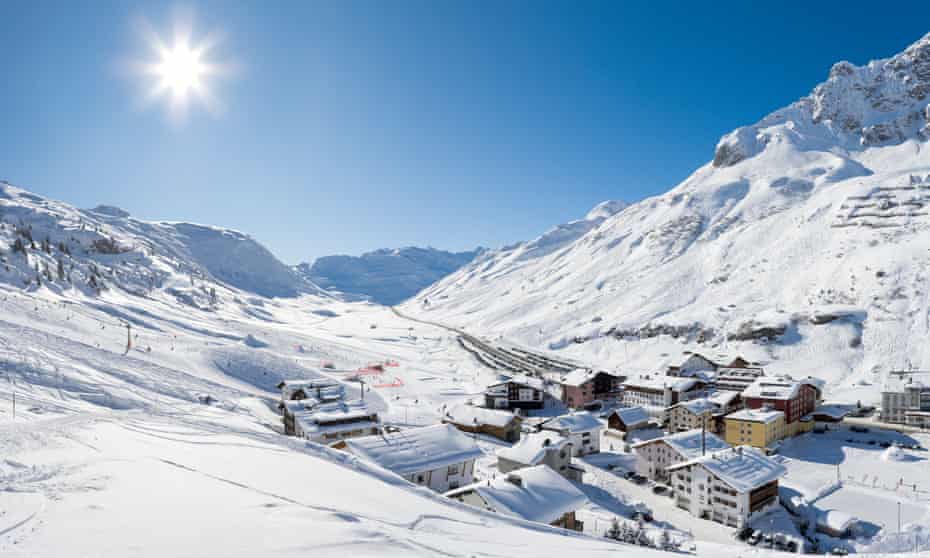
As a sector that will be hugely affected by global warming, the ski industry is making progress towards a more sustainable model.
Pyha, in Finland’s eastern Lapland, wants to become the world’s “cleanest” ski area, and was the first Scandinavian resort to go carbon neutral, back in 2011. Laax, in Switzerland, wants to do the same by 2030 – making the entire resort self-sufficient, not just the mountain infrastructure of lifts and restaurants; many resorts, including Ishgl in the Austrian Tirol, have already achieved this. In Italy’s Trentino region, Pejo 3000 claimed it was the “world’s first plastic-free ski resort” when it banned disposable plastic in 2019.
Also aiming to impress with its eco credentials, and with an epic ski area to boot, is Lech-Zurs in Austria’s Arlberg. Depending on Covid restrictions, it’s worth a visit in 2022. Linked to St Anton, which has some of the best off-piste riding in Europe, and with its own extensive freeride terrain (which gets tracked out far less rapidly thanks to the popularity of long lunches at its mountain restaurants), it is working hard on the green front. The number of guest beds is capped at 10,000 to curtail development, lift pass numbers have been limited, local biomass heaters provide heat and communal hot water, and so on.
On the white front there’s plenty of steep off-piste, cruisy pistes to tiny mountain villages, plus shopping for traditional Austrian boots and clothes on Lech’s twinkling main drag. The Alpenland hotel (doubles from €195 half-board) is great value, but better still, escape the glitz in the peaceful riverside hamlet of Zug, staying maybe at the family-run Schafberg (doubles from €125 B&B). Riding a classic off-piste route that drops 1,000 vertical metres from the Madloch-Joch to Zug is a pleasure one hopes will continue.
The nearest station is Langen am Arlberg (trains from Innsbruck and Munich) or St Anton (trains from Zurich), both linked by bus
Gemma Bowes




